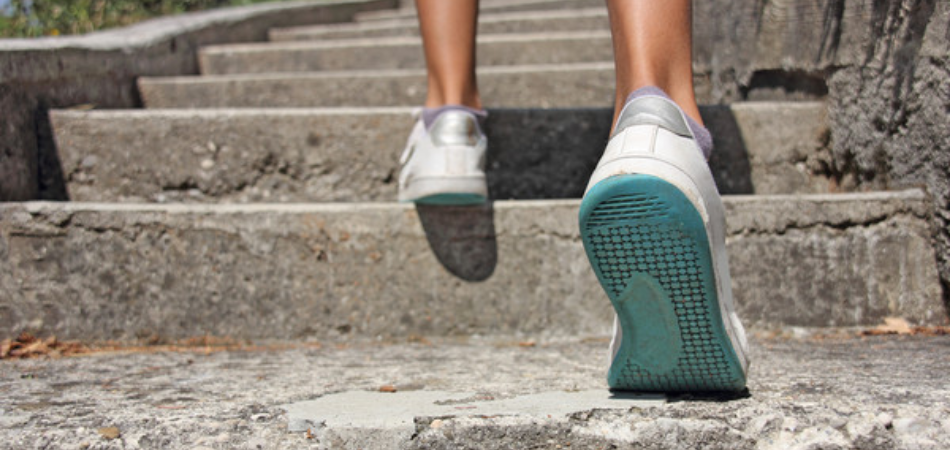The first thing to look out for when getting a shoe is the comfort it provides. This comes in play, especially if you’ll be running with the shoes. Foremost, a good pair of shoes should fit snugly on your feet. This is very important, especially if you’re walking on concrete or floors with tiles.
These two types of floors can be very smooth depending on the finishing on the floor. You may want to take precautions about what you wear and how you walk in them. Running shoes provide so much comfort for the feet and are suitable for various applications. But are running shoes good for walking on concrete?
If you’re wearing the shoes you use for running on tracks; you can use them on concrete. However, you must consider some factors, such as the amount of traction the concrete floor provides for your kind of running shoes. This article will share some important tips about using running shoes on concrete.
Key Points
- You can walk on concrete with running shoes.
- If you’re walking on concrete for long with running shoes, you should go for running shoes that have most of the properties of walking shoes.
- Running shoes used on concrete must have soft interiors and a slip-resistant outsole.
- If your running shoe has spikes, it won’t provide a firm grip on concrete terrain and is unadvisable.
What’s The Difference Between a Running Shoe and a Walking Shoe?
When it comes to running and walking, the kinds of shoes you pick for both purposes play a significant role in the balance. This is because they have some differences that make them ideal for their purpose.

First off, you must consider the comfort they provide your feet. This is a major thing designers consider when making shoes for runners or for everyday walking purposes. Also, running shoes are designed to provide better traction for the runner. Other things include flexibility, weight, cushioning, etc. Let’s get into the details of this below.
1. Weight Of The Heels
You probably know that the size of your shoes’ heels contributes to how stable you are while wearing them. That’s why experts will always recommend using good running shoes for concrete floors. Running shoes comes with raised heels. This reduces the pressure felt on your ankles when you bounce on the floor.
However, the thickness of your shoe sole also depends on the individual. Some runners land first on their heels, while others land on the ball of their feet, and others on the toes. Depending on which part of your feet lands on the ground first, you can adopt a heel-to-toe drop that suits you. The heel-to-toe drop simply means the elevation of the heels from the ground compared to the toes.
Walking shoes, on the flip side, do not have any need for an elevated heel. This is because walkers don’t exert much weight or pressure and, as such, don’t need heavier soles. If you’re using the shoes for fitness and other sports, we recommend shoes with very little difference between the toes and heels.
2. The Flexibility Of The Shoe
You probably feel uncomfortable while running with a pair of shoes that weren’t designed for running. Running shoes are designed with additional flexibility when compared with walking shoes. Running shoes come with additional functions. They come with different grades of heel-toe-drop for corresponding heel-strikers, midfoot-strikers, and toe-strikers.
On the flip side, walking shoes are not designed with much in mind, especially when it comes to flexibility. Most walking shoes are usually too stiff and may not be as flexible as a basic running shoe. Sometimes, they are not even recommended during fitness walks. They are designed to allow their wearers to feel just fine with their strolls and other long-distance walks. Most times, they might be heavy and rigid.
3. Breathability
When running, your body exerts more energy compared to walking. As such, the body releases more sweat. Therefore, running shoes offer more ventilation for the feet. This also contributes to the extra weight that running shoes come with.
Walking shoes are the reverse. They don’t need the ventilation that you find in most running shoes. However, this depends on the user’s preference. If you’re a heavy sweater, it is just fine to wear walking shoes with enough ventilation.
4. Comfortability
The comfort a shoe provides your feet has a lot to do with the cushioning materials. Runners hit their feet on the ground with a larger force than walkers. As such, running shoes must allow for additional comfort.
When designing running shoes, 2 parts that require the most cushioning are the forefoot and the heels. The reasons are obvious: runners tend to land on any of these parts. We guess you’ve probably heard shoe manufacturers going about with hypes about the air cushioning provided in their products.
Without proper cushioning, one might have pains or severe conditions on their feet. Another reason why this is important is that these are parts where bones meet tendons. Common complications resulting from wearing running shoes with inadequate comfort include hip and knee pains. In some cases, it may induce conditions such as plantar fasciitis and Achilles tendonitis.
Walking shoes don’t need all that additional cushioning because you don’t exert much pressure on your feet when walking. More so, shoes may feel heavier when you’re walking than when you’re running. The extra weight that comes with cushions is why designers add a smaller amount of cushions to walking shoes.
Is It Ok To Wear Running Shoes For Walking?
You may not face many problems if you’re walking for a short time while wearing running shoes. So, it is OK to wear running shoes for walking. This is because they have a lot of properties in common. However, you must note that this practice is not ideal.

You’ll need proper walking shoes if you’ll be walking for long distances. This will help you avoid any discomfort that may come from wearing the wrong shoes. We already mentioned some differences between running shoes and walking shoes. If you want to use running shoes for walking, below are some tips you should consider:
Avoid Minimalist Sneakers
Minimalist sneakers are one set of running shoes that you must avoid at any length when walking. These shoes have low heel-to-drop, high flexibility, and are weighty. Furthermore, they lack stability and motion control supports. They provide little to no absorption for the shock your feet will experience while you walk.
Pay Close Attention To How Your Feet Feel
Several complications may arise from wearing the wrong shoes. Such discomforts can deteriorate from minor pains to severe cases if not handled properly and timely. Some minor foot issues you may experience include blisters, plantar fasciitis, metatarsalgia, etc.
During your walks, take short breaks to flex your feet and pay attention to how they feel. If you feel pain, we advise you to get appropriate walking shoes.
Go For Running Shoes With Low Heels
Most running shoes are built with elevated heels. These heels provide additional support and balancing. Also, it helps to cushion the impact the feet experience when they hit the ground. Running shoes used for walking should have a low heel-to-toe drop. A heel drop of 10 mm or below is ideal.
Are Running Shoes Good For Working On Concrete?
You can wear running shoes while working on concrete if it provides the comfort your feet need. If the running shoes have properties that meet the minimum criteria for working shoes, such as being lightweight or soft cushioning, it makes them a flawless option.

In case you are working on concrete, below are some things you must consider while wearing running shoes:
- Shoes must have extra support
- Running shoes used to work on concrete must have additional cushioning that is soft.
- The footwear must have support for increased stability.
- Must be lightweight.
Best Shoes For Walking On Concrete
Concrete is hard and can cause discomfort if you wear the wrong shoes when walking on them. This may result in pain if you continue for long. Below are some qualities of the ideal shoes for walking on concrete.
- They must have good ankle and arch support to avoid pains.
- Must contain adequate cushioning.
- Running shoes used to walk on concrete must have soft, bouncy, and comfortable insoles.
- Must be slip-resistant just in case of oil, soap, or water spills.
- When selecting running shoes to walk on concrete, select shoes that have some space between your toes and the insides of the shoe.
- Running shoes used on concrete must have outsoles that provide a firmer grip on concrete.
Conclusion
Are running shoes good for walking on concrete? You can wear your running shoes to walk on concrete. More importantly, such shoes must have sufficient cushioning to help you withstand the impact of the hard concrete. If the floor has a smooth finishing, you must wear slip-resistant running shoes.
Moreover, pay attention to how you feel when wearing running shoes for walking. Thankfully, there are some classifications through which you can differentiate between running and walking shoes. Some key categories that determine their classifications include the weight of the heels, cushion provided, shoe flexibility, and ventilation.
Steven is a former sportsperson and now a full-time businessman and research writer. He is the mastermind of this site, and he created this site to help people who need specialized shoes for different activities. When he was a sportsperson, he was very passionate about different types of shoes for his sports purpose. The passion he had for shoes at that time now turned into his profession. Besides his shoe business, he loves sharing his knowledge and experience with people and helping them maintain healthy feet.
More Posts